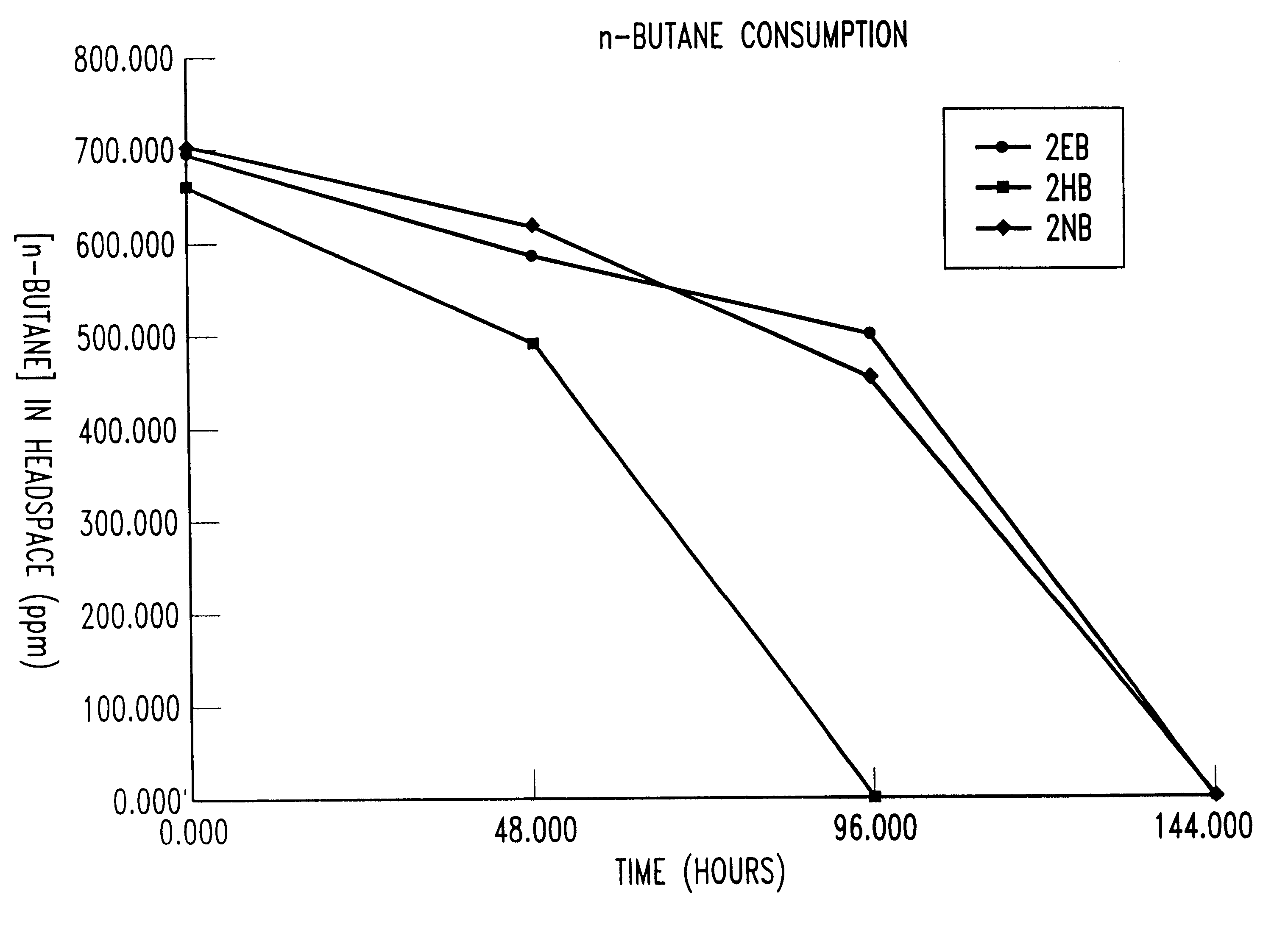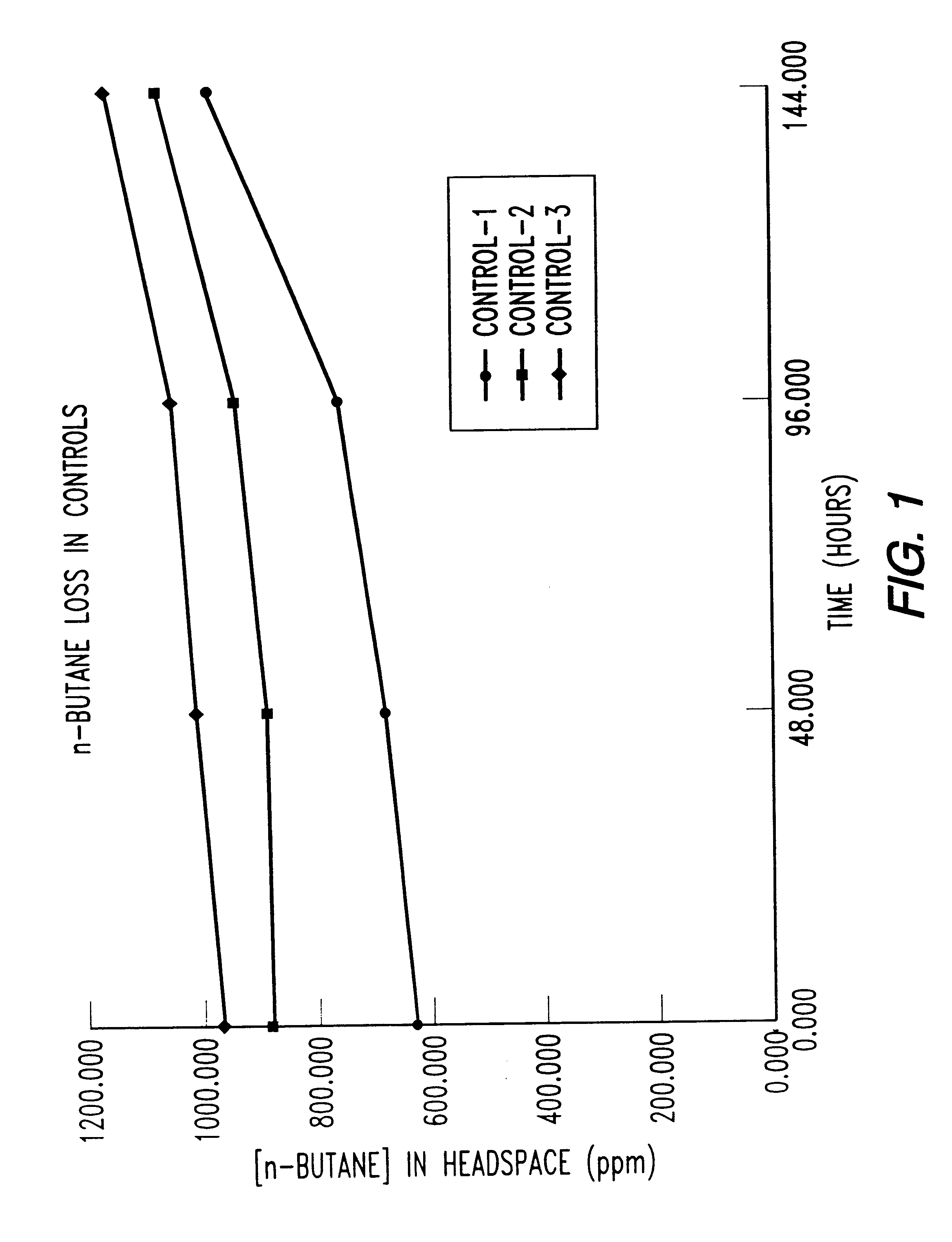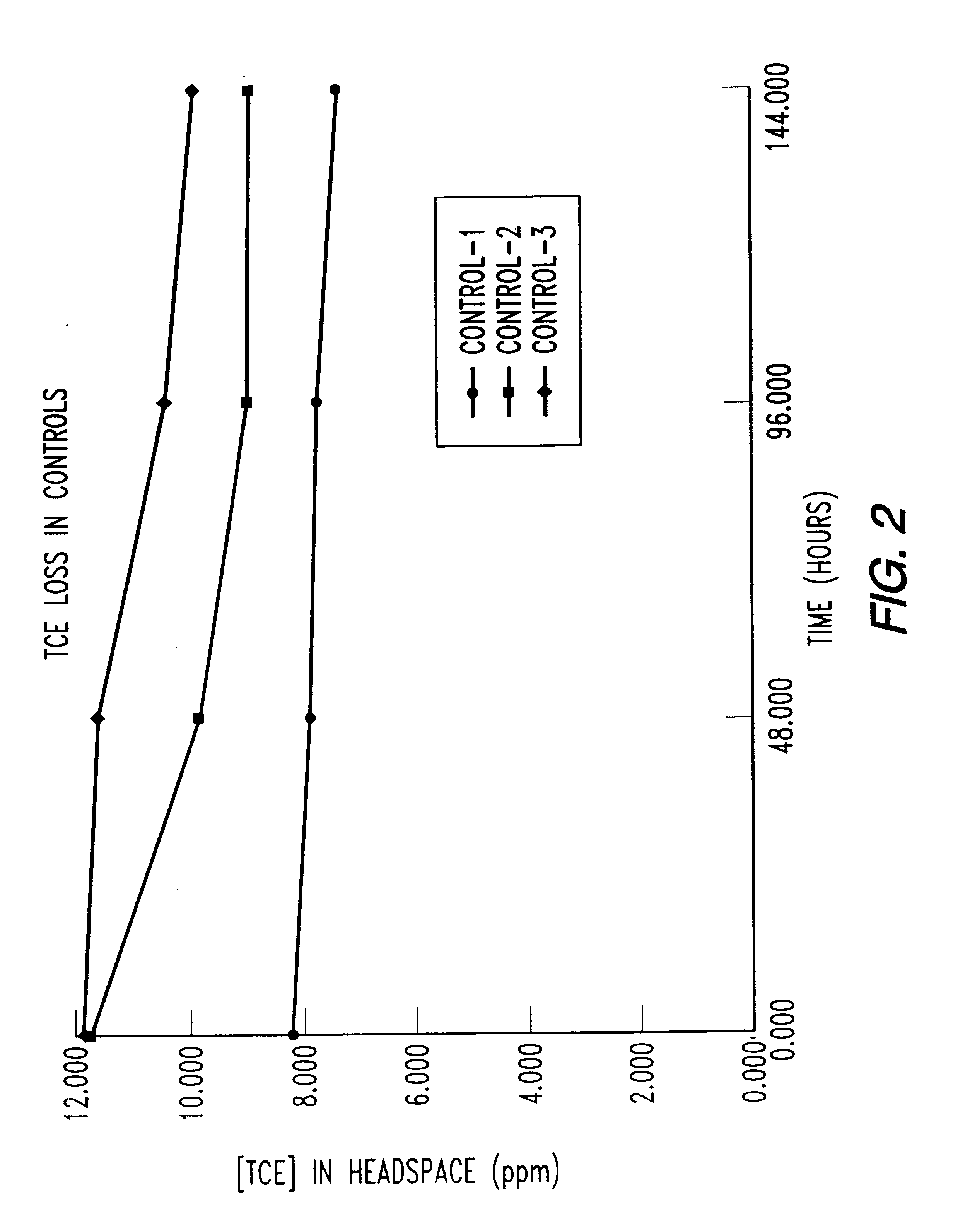Bioremediation of pollutants with butane-utilizing bacteria
a technology of butane-utilizing bacteria and pollutants, which is applied in the field of bioremediation of pollutants with butane-utilizing bacteria, can solve the problems of high levels of chlorinated compound contamination in surface and subsurface environments, serious jeopardizing drinking water aquifers and reservoirs, and incineration costs. , to achieve the effect of volatilizing organic compounds, the effect of requiring considerable energy and costly equipmen
- Summary
- Abstract
- Description
- Claims
- Application Information
AI Technical Summary
Benefits of technology
Problems solved by technology
Method used
Image
Examples
example 2
Two 6liter bioreactors were operated simultaneously for six and a half hours. The first bioreactor was seeded with isolates from 3NB and the second bioreactor with isolates from 4EB. A biofilm was formed on an aluminum screen substrate as shown in FIG. 17. Each bioreactor contained 4.2 liters of autoclaved deionized water with a MSM amendment and an aluminum screen with pore size 0.0039 square inches. The two bioreactors contained 4-liters of headspace total volume and a maximum of 6liters total headspace throughout the gas recirculation lines. The recirculation system was driven by a hermetically-sealed bellows vacuum pump that operated at 0.22 cfm and 10 psi, producing 622 ml / min of air flow. The pump simultaneously recirculated the headspace volumes in both bioreactors. The butane and TCE loss over time is shown in Table 16.
FIGS. 21 and 22 demonstrate the degradation of TCE and butane in the dual-bioreactors while running in batch mode. TCE disappearance from an initial aqueous-p...
PUM
| Property | Measurement | Unit |
|---|---|---|
| depths | aaaaa | aaaaa |
| concentrations | aaaaa | aaaaa |
| surface area | aaaaa | aaaaa |
Abstract
Description
Claims
Application Information
 Login to View More
Login to View More - R&D
- Intellectual Property
- Life Sciences
- Materials
- Tech Scout
- Unparalleled Data Quality
- Higher Quality Content
- 60% Fewer Hallucinations
Browse by: Latest US Patents, China's latest patents, Technical Efficacy Thesaurus, Application Domain, Technology Topic, Popular Technical Reports.
© 2025 PatSnap. All rights reserved.Legal|Privacy policy|Modern Slavery Act Transparency Statement|Sitemap|About US| Contact US: help@patsnap.com



